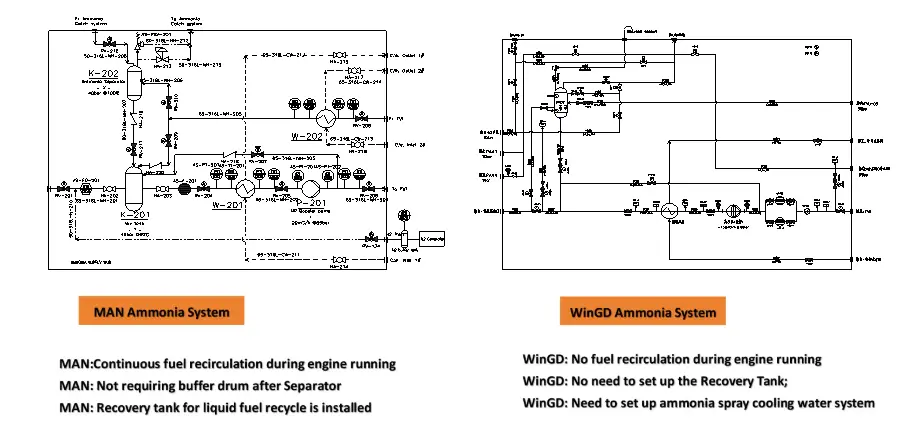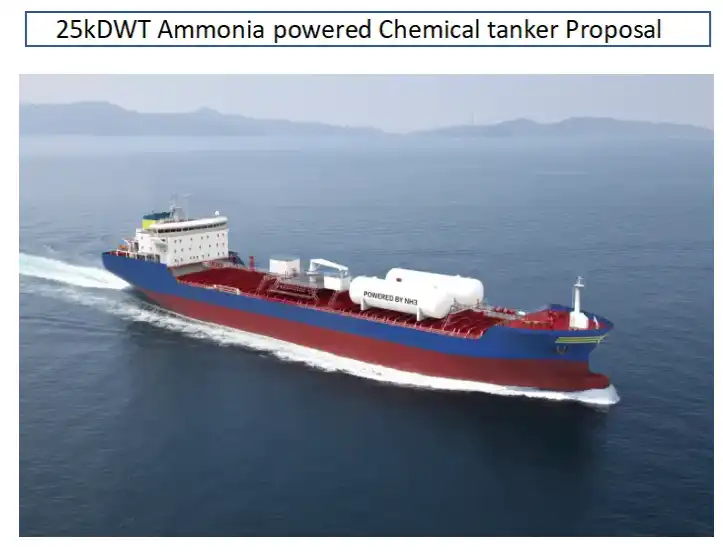Ammonia Fuel Distribution Matrix
Overview of the Ammonia Fuel Distribution Matrix
The Ammonia Fuel Distribution Matrix consists of a number of core components, including the filling and storage system, the Ammonia Fuel Supply System (AFSS), the Fuel Value Unit (FVU), the vent system, the Ammonia Release Management System (ARMS), the ventilation system, the inert gas system, the engine’s internal ammonia fuel unit, and the safety mechanism. It is essential to understand that there are substantial distinctions between the systems implemented by MAN and WinGD.

Why Choose Us?
1. Unmatched Expertise in the Industry – Our extensive background in designing and building dual-fuel vessels, liquefied gas carriers, chemical tankers, and their related systems has solidified our position as a leader in the field.
2. All-Inclusive Service Portfolio – We provide a full suite of services covering Methanol Fuel Supply Systems (MFSS), LNG Fuel Supply Systems (FGSS), Ammonia Fuel Supply Systems (AFSS), and LPG Cargo Handling Systems (CHS), conveniently available through a single provider.
3. Track Record of Delivery Excellence – With 19 successful installations of clean fuel supply and cargo handling systems, we are recognized for our consistent quality and dependable service.
4. Leading AFSS Innovation – Drawing upon extensive experience in both ammonia carrier construction and LPG retrofits, we independently develop advanced ammonia fuel supply systems and actively support zero-carbon technology projects.
5. Lifecycle Support Across All Phases – From the initial design to final manufacturing and installation, we offer end-to-end lifecycle support, including multi-unit construction and complete post-delivery service.
Product Specifications

Product Features
1. Efficiency and Safety in One System – The Ammonia Fuel Distribution Matrix is engineered to provide both safe and efficient ammonia storage and bunkering, fully aligned with IMO guidelines and low-flashpoint fuel requirements specific to the maritime sector.
2. Precision Flow Control and Safety Features – It integrates sophisticated flow control mechanisms along with enhanced safety systems such as emergency shut-off, leak detection, and compatibility with inert gas setups to ensure secure operations.
3. Environmentally Focused Design – Aiming to minimize environmental impact, the system employs vapor control strategies including re-liquefaction and thermal oxidation—especially beneficial for low-pressure storage configurations.
4. Robust Ventilation and Hazard Control – The system delivers comprehensive ventilation coverage for both open and enclosed areas, and incorporates inert gas solutions to reduce the risk of explosions in hazardous environments.
5. Advanced Pressure Regulation – Utilizing thermal oxidation units and sub-cooling or re-liquefaction systems, it maintains ammonia vapor pressure within safe limits in low-pressure tanks, thereby improving operational reliability.

Installation Process
1. Review of Vessel Specifications – Start by carefully assessing the vessel’s design and system interface criteria, confirming all technical aspects prior to installation.
2. Preparation for Installation – Ensure all required equipment, tools, and safety measures are fully prepared and available before initiating the installation process.
3. Transport of Pre-Assembled Units – Deliver the pre-assembled fuel supply module to the installation site using proper lifting tools, and position it accurately at its mounting location.
4. Fixing the Module – Attach and secure the module’s base to the vessel’s framework, ensuring alignment and stability as outlined in the engineering specifications.
5. Connecting System Components – Link the fuel pipelines, auxiliary connections, and control wiring, thoroughly checking the sealing quality and integrity of all electrical elements.
6. System Testing and Commissioning – Conduct subsystem-level and integrated function tests to validate the performance of bunkering, fuel supply, and safety control operations.
For more product information about Ammonia Fuel Distribution Matrix, please leave a message below.

